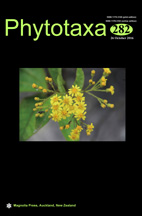Abstract
Based on aspects of the classical LM morphology, and a combination of ultrastructural and molecular data, a new true-branched cyanobacterium, i.e. Spelaeonaias floccida Lamprinou, Christodoulou, Hernández-Mariné et Economou-Amilli, gen. nov. sp. nov., is described from the Greek cave Vlychada (part of the ‘Diros’ cave complex, Peloponnese, Greece). The new monospecific genus bears a Y-like type of branching, intercalary heterocytes and terminal heterocytes at the ensheathed hormogonia, thus morphologically resembling Symphyonemopsis. The subaerophytic growth of the ensheathed hormogonia is considered as the autapomorphic feature for Spelaeonaias. The 16S rRNA sequencing revealed that S. floccida forms a well congruent monophyletic cluster along with two stigonematalean strains SA1301 and SP302 from Maltese catacombs (GenBank: HQ917695 and HQ917696 respectively).

